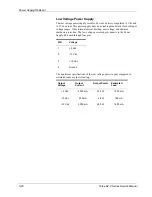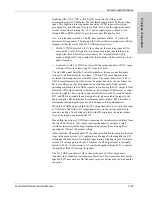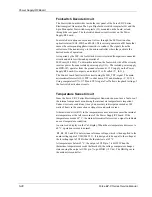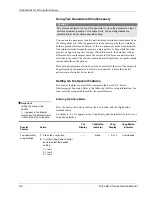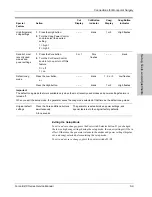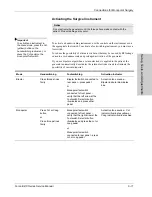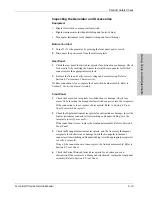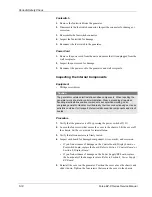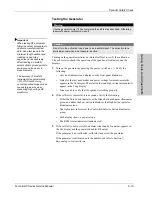
Power Supply/RF Board
5-28
Force EZ-C Series Service Manual
Footswitch Decode Circuit
The Footswitch board resides inside the rear panel of the Force EZ-C Series
Electrosurgical Generator. The 3-pin Bipolar Footswitch receptacle (J4) and the
4-pin Monopolar Footswitch receptacle (J1), mounted on the board, extend
through the rear panel. The footswitch decode circuit resides on the Power
Supply/RF board.
Footswitch activation causes current to flow through the LED section of an
optical isolator (ISO1, ISO2, and ISO3). This current generates an IR beam that
causes the corresponding photo-transistor to conduct. The signals from the
collectors of the transistors go to the microcontroller where they activate the
desired mode of operation.
As required by the IEC, the footswitch circuit is isolated from patient connected
circuits and able to withstand a potential of
500 Vrms (50/60 Hz). To obtain this isolation, the footswitch side of the circuitry
receives power from an isolated power supply (U11). The isolated power supply,
an HPR-107, operates from the ground refe12 V supply on the Power
Supply/RF board. Its output is an isolated 12 volts V_ISO_4.
The Control board fault tests this circuit using the ISO_TST\ signal. The main
microcontroller asserts ISO_TST\ to shut down U11 and disV_ISO_4.
Using comparators U7A, U7B, and U9A to gate Vref2 allows loopback testing of
the footswitch activation circuits.
Temperature Sense Circuit
Since the Force EZ-C Series Electrosurgical Generator does not use a fan to cool
the internal components, monitoring the internal air temperature is important.
Under worst case conditions, it may be necessary to dissipate as much as 180
watts of heat via the convection cooling slots and surface areas.
A thermistor device (R13) in the temperature sense circuit measures the internal
air temperature at the left rear corner of the Power Supply/RF board. If the
temperature exceeds 65° C, the main microcontroller receives a signal to indicate
an over-temperature condition.
An error code displays in the Cut display. When the air temperature decreases to
60° C, operation returns to normal.
R5, R6, R15, and R16 determine a reference voltage, which is then applied to the
noninverting input of U2B (LM 393). It is designed to be equal to the voltage at
the inverting input of U2B when the thermistor is at 65° C.
At temperatures below 65° C, the output of U2B pin 7 is LOW. When the
thermistor temperature exceeds the threshold, the voltage comparator changes
state causing the output at U2B pin 7 to go HIGH (+5 Vdc). The HIGH goes to
the main microcontroller.







